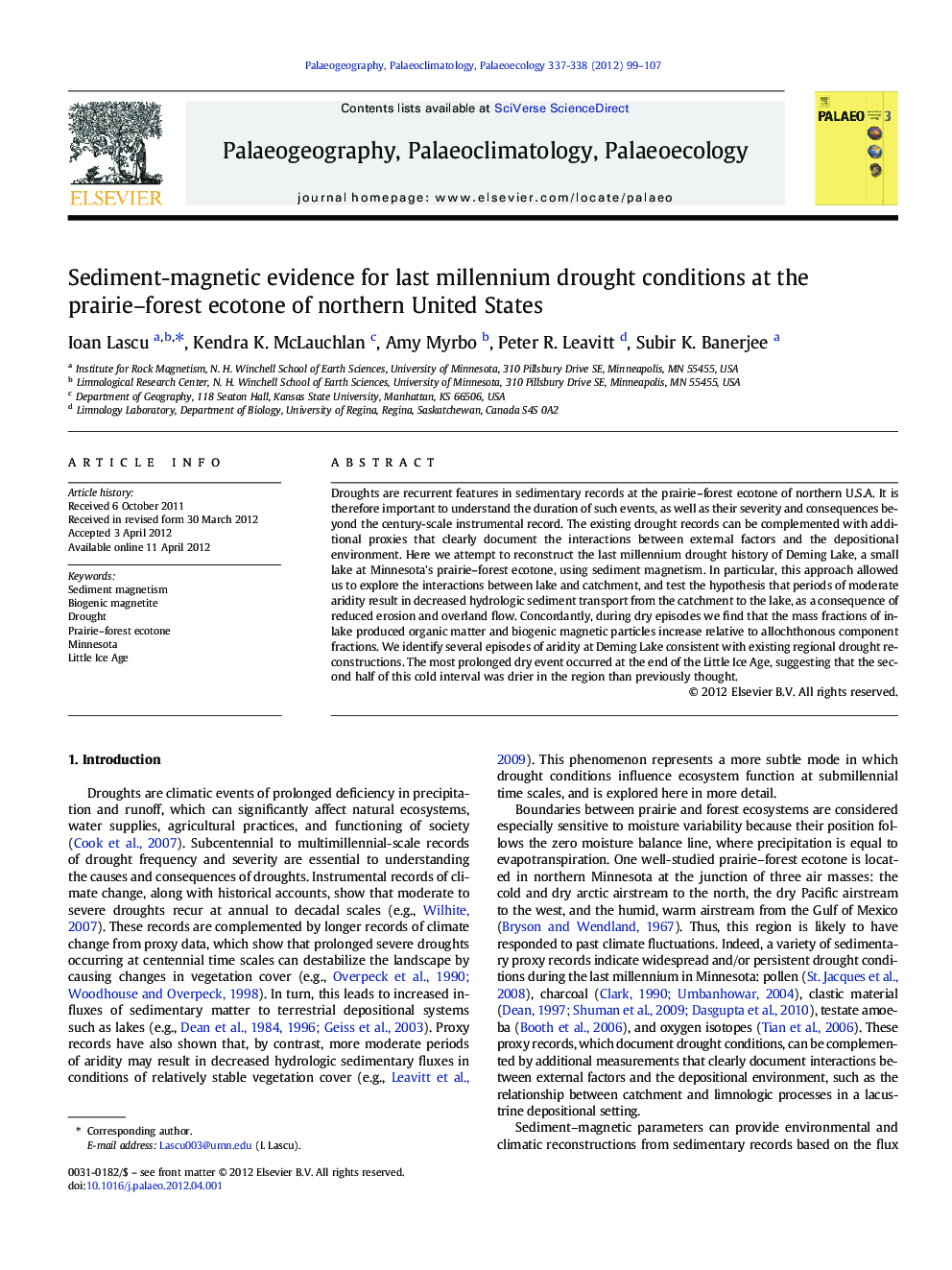| Article ID | Journal | Published Year | Pages | File Type |
|---|---|---|---|---|
| 4466912 | Palaeogeography, Palaeoclimatology, Palaeoecology | 2012 | 9 Pages |
Droughts are recurrent features in sedimentary records at the prairie–forest ecotone of northern U.S.A. It is therefore important to understand the duration of such events, as well as their severity and consequences beyond the century-scale instrumental record. The existing drought records can be complemented with additional proxies that clearly document the interactions between external factors and the depositional environment. Here we attempt to reconstruct the last millennium drought history of Deming Lake, a small lake at Minnesota's prairie–forest ecotone, using sediment magnetism. In particular, this approach allowed us to explore the interactions between lake and catchment, and test the hypothesis that periods of moderate aridity result in decreased hydrologic sediment transport from the catchment to the lake, as a consequence of reduced erosion and overland flow. Concordantly, during dry episodes we find that the mass fractions of in-lake produced organic matter and biogenic magnetic particles increase relative to allochthonous component fractions. We identify several episodes of aridity at Deming Lake consistent with existing regional drought reconstructions. The most prolonged dry event occurred at the end of the Little Ice Age, suggesting that the second half of this cold interval was drier in the region than previously thought.
► The biogenic magnetite record from Deming Lake is a proxy for drought conditions. ► Sediment magnetism documents interactions between lake and catchment during droughts. ► Drought reduces erosional pathways in environments with stable vegetation. ► The Little Ice Age in north-central Minnesota was drier than previously thought.
